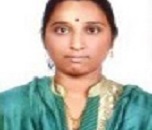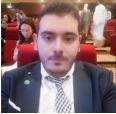Scientific Program
Keynote Session:
Title: Proposition of new cold fusion reactor based on the mechanism with the flat wafer with nano structure and with the electrode to control the surface potential of metals
Biography:
Abstract:
propose the new cold fusion reactor and heat element in fig.2 based on the cold fusion mechanism shown in fig.1.

Serzat Safaltin
Department of Metallurgical and Materials Engineering, Istanbul Technical University, Istanbul, Turkey.Title: First principles modeling of three-phase interface system of ZrB2-ZrC-ZrSi2
Biography:
Abstract:

Wilfried Wunderlicha
Department of Material Science, Faculty of Engineering, Tokai University, JapanTitle: Active role of C₃N₄, and CQD for photocatalytic water purification, an overview
Biography:
Abstract:

Sailaja
Department of Pharmaceutics, RBVRR Women’s College of Pharmacy, Barkatpura, Hyderabad, Telangana, IndiaTitle: Novel Approaches for Transdermal Drug Delivery of Curcumin
Biography:
Dr. A. Krishna Sailaja is currently working as Associate Professor and Head of the Department in RBVRR Women’s college of pharmacy, Osmania University, Hyderabad. She has published 130 research papers in various National and International journals. She delivered more than 25 talks on novel drug delivery systems. Published 5 books and filed 4 patents.
Abstract:

Khalid Abdelhadi Zuiater
Department of Civil Engineering, Shanghai Construction Group,Yenigun General Contracting,Abu Dhabi,UAETitle: Freeze Thaw Environment of Concrete Material Effect & Polymers
Biography:
Khalid Zuiater has completed his BSc at the age of 22 years from ABET, Department of Civil Engineering, Lucian School of Civil Engineering, Abu Dhabi University(Purdue University),UAE. He has Wrote Three Books Representing the Current Structural Applications Titled by Cherry Rose Definitions, a premier Active in the ABET organization. He has Publications more than 30 papers in reputed Free Lancing & Researching and has been serving as an CPFCE Committee ,ASCE board member of repute.


